Variable Rate Tillage:
A Flexible Option for Farmers
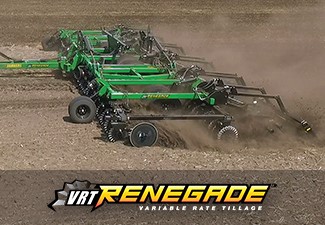 For years we’ve known that soil types and conditions can change drastically, not only from one field to the next, but also within just one field. And as technology and farming practices advance, we’re learning to manage these variations by adjusting our seeding rates, hybrids, fertilizer rates and other inputs accordingly. Consequently, one of the latest innovations in tillage is variable rate tillage tools, such as the Summers VRT Renegade®, that provide farmers with the flexibility to adjust tillage aggressiveness on the go according to changing field conditions.
For years we’ve known that soil types and conditions can change drastically, not only from one field to the next, but also within just one field. And as technology and farming practices advance, we’re learning to manage these variations by adjusting our seeding rates, hybrids, fertilizer rates and other inputs accordingly. Consequently, one of the latest innovations in tillage is variable rate tillage tools, such as the Summers VRT Renegade®, that provide farmers with the flexibility to adjust tillage aggressiveness on the go according to changing field conditions.
The 2018 growing season is an excellent example for many producers of how flexible tillage technologies can fit into farming operations. Consider how one field may benefit from multiple types of tillage because of challenging weather conditions experienced throughout the season. One spot may have only light residue that requires little tillage, due to flooding earlier in the season. Other spots may have ruts from the sprayer or harvest equipment that require filling. Some areas may have been too wet to plant at all, and became overgrown with weeds. But most of the field produced exceptionally well and left heavy residue that needs to be sized and mixed for quick decomposition. Of course, the goal in all of these management zones is to leave a smooth, consistent seedbed for spring planting in 2019.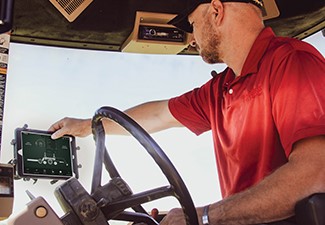 A variable rate tillage tool like the VRT Renegade allows operators to independently adjust the front and rear blade angles, as well as the hydraulic hitch, tillage depth, gauge wheels, wing down pressure and rolling basket down pressure on the fly using an iPad. The combination of all these adjustments allows operators to achieve the exact desired tillage outcome in all field conditions, from light vertical tillage to heavy conventional tillage and anywhere in between.
A variable rate tillage tool like the VRT Renegade allows operators to independently adjust the front and rear blade angles, as well as the hydraulic hitch, tillage depth, gauge wheels, wing down pressure and rolling basket down pressure on the fly using an iPad. The combination of all these adjustments allows operators to achieve the exact desired tillage outcome in all field conditions, from light vertical tillage to heavy conventional tillage and anywhere in between.
John Nowatzki, agricultural machines specialist at North Dakota State University Extension, sees several potential advantages of variable rate tillage tools. “I see it particularly appropriate for residue management when there’s less residue on higher elevations and more residue in lower areas,” he said.  Perhaps the biggest benefit of minimizing over-tilling is erosion control. “Farmers now generally till the whole field the same way,” said Nowatzki. “But if they can go to less intensive tillage, especially on hills and areas where there is less residue to protect the soil, they may help reduce erosion issues, and it ought to be more fuel efficient, too.”
Perhaps the biggest benefit of minimizing over-tilling is erosion control. “Farmers now generally till the whole field the same way,” said Nowatzki. “But if they can go to less intensive tillage, especially on hills and areas where there is less residue to protect the soil, they may help reduce erosion issues, and it ought to be more fuel efficient, too.”
Along with fuel efficiency, the flexibility of variable rate tillage tools allows operation at high speeds as well. In recent years, many farmers have gravitated from vertical tillage to more aggressive high-speed disks due to challenges with heavy residue and the need to cover a lot of acres quickly. However, variable rate tillage tools may now offer farmers benefits of both vertical tillage and aggressive high-speed disks in one implement.
Another potential advantage of the variable rate tillage trend is the ease of use. “Farmers often tell me that one of their biggest management issues is finding people to operate equipment, specifically when we get into precision technologies, because older farmers are often not comfortable using computers,” said Nowatzki. “I think the ability to do variable rate is great when the technology is easy to use. And I’m interested to see how manufacturers may be able to further automate this technology in the future based on field maps or sensing residue in the field.”
In the end, Nowatzki sees variable rate tillage as a natural fit in what farmers are doing with precision ag today. “If farmers have the option to buy tillage equipment that does variable rate, I think it’s good, and it’s something that I can see having a fast payback.”









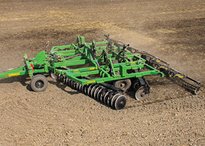






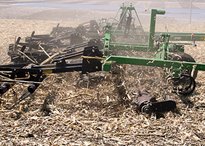
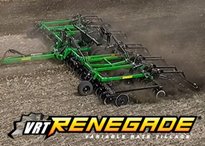
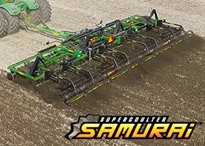









 Hats, Diecast Models, Gloves and More!
Hats, Diecast Models, Gloves and More!
 Library
Library